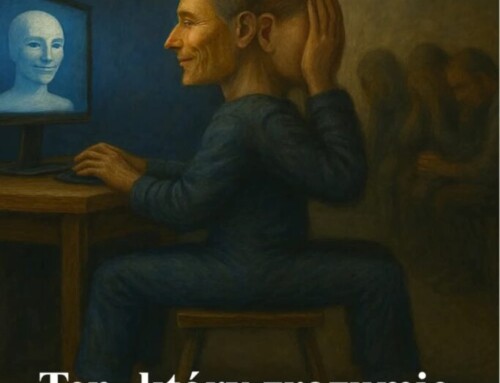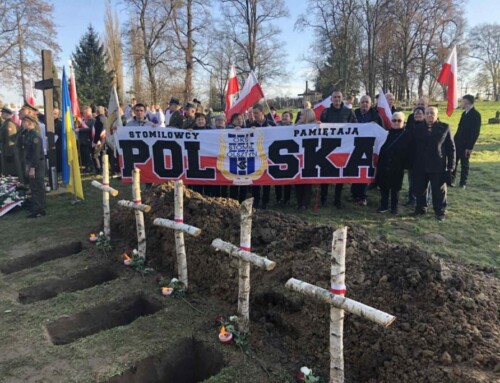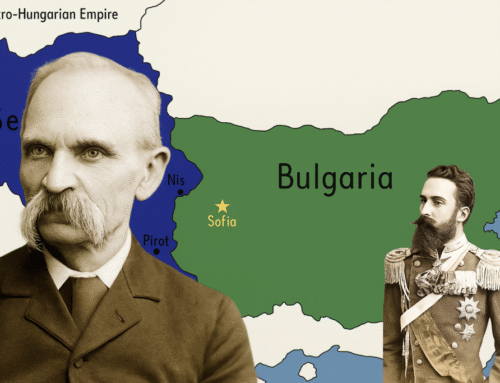Otrzymałem na mojego e-maila ciekawą recenzję AI na temat mojego artykułu – Recenzja AI – „Artifacts made of meteoritic iron in Polish collections” — „Artefakty z meteorytowego żelaza w polskich zbiorach” – https://www.academia.edu/ai_review/112463308
Przedstawiona praca stanowi intrygującą eksplorację historii i analizy artefaktów wykonanych z żelaza meteorytowego, w szczególności tych znalezionych w polskich kolekcjach. Autor, Andrzej Kotowiecki, przedstawia szczegółowy opis kilku artefaktów, takich jak bransolety i topory, podkreślając ich unikalną kompozycję i znaczenie historyczne. Ta praca rzuca światło na mniej znane aspekty skrzyżowań metalurgicznych i archeologicznych.
Przegląd
W niniejszym opracowaniu zbadano historyczne artefakty wykonane z żelaza meteorytowego znalezione w Polsce, oceniając ich znaczenie kulturowe i historyczne. Praca ta symbolizuje istotny wysiłek na rzecz rozszerzenia listy polskich meteorytów poprzez uznanie i udokumentowanie artefaktów wcześniej pomijanych w zapisach historycznych. Kotowiecki proponuje nowe kategoryzacje takich artefaktów, wzmacniając ich odrębność i znaczenie historyczne. Autor opiera to badanie na analizach chemicznych i spektrograficznych, aby poprzeć twierdzenia dotyczące pochodzenia meteorytowego tych obiektów. Artefakty te podkreślają zaawansowaną wiedzę metalurgiczną i znaczenie kulturowe żelaza meteorytowego w starożytnych społeczeństwach. W tej pracy ukryte jest założenie, że rozszerzenie znanego inwentarza takich artefaktów wzmacnia nasze zrozumienie wymiany kulturowej i postępu technologicznego.
Powiązane odniesienia
Dołączenie jasnego przeglądu literatury pomaga recenzentom szybko zobaczyć, co jest nowego i dlaczego to ma znaczenie, co może przyspieszyć przegląd i zwiększyć szanse na akceptację. Poniższe odniesienia zostały wybrane, ponieważ ściśle odnoszą się do tematów i idei w Twoim zgłoszeniu. Mogą one zapewnić pomocny kontekst, zilustrować podobne metody lub wskazać na ostatnie wydarzenia, które mogą wzmocnić sposób, w jaki Twoja praca jest pozycjonowana w istniejącej literaturze.
Kotowiecki, Andrzej. „Artefakty z żelaza meteorytowego w polskich zbiorach.” Meteoritics & Planetary Science, Wiley-Blackwell, 2004, doi:10.1111/j.1945-5100.2004.tb00351.x.
Pilski, Andrzej S. „Inwentaryzacja polskich meteorytów.” Kwartalnik Geologiczny, Państwowy Instytut Geologiczny, 2012, http://gq.pgi.gov.pl/gq/article/view/7984/pdf_121 .
Zav’yalov, Władimir P. i Natalia Terekhova. „Redukcja meteorytowych artefaktów żelaznych”. Archeologické Rozhledy, Instytut Archeologii Czeskiej Akademii Nauk, 2019, doi:10.35686/ar.2019.8.
Flight, Walter. „II.—Rozdział z historii meteorytów.” Geological Magazine, Cambridge University Press, 1875, doi:10.1017/s0016756800158431.
F., L. „Die Mikroskopische Beschaffenheit Der Meteoriten Erläutert Durch Photographische Abbildungen Die Structur Und Zusammensetzung Der Meteoreisen Erläutert Durch Photographische Abbildungen Geätzter Schnittflächen Die Meteoritensammlung Des kk Mineralog Hofkabinetes in Wien.” Natura, portfolio przyrodnicze, 1889, doi: 10.1038/041127b0.
Szopa, Krzysztof i in. „Pozostałości zmienionego meteorytu na granicy iłów kredowo-paleogeńskich w Polsce.” Meteoritics & Planetary Science, Wiley-Blackwell, 2017, doi:10.1111/maps.12815.
Jambon, Albert i in. Niebiański metal dla plebsu: stare i nowe meteoryty z cmentarzysk wczesnej epoki żelaza w Częstochowie (Polska). 2024, https://doi.org/10.2139/ssrn.4776236 .
Flight, Walter. „III.—Rozdział z historii meteorytów: ciąg dalszy ze strony 30.” Geological Magazine, Cambridge University Press, 1875, doi:10.1017/s0016756800111847.
Przylibski, Tadeusz A. i in. „Meteoryt enstatytowy z Zakłodzia: mineralogia, petrologia, pochodzenie i klasyfikacja.” Meteoritics & Planetary Science, Wiley-Blackwell, 2005, doi:10.1111/j.1945-5100.2005.tb00424.x.
Karwowski, Łukasz i in. „Spadek nowego meteorytu w Sołtmanach w Polsce”. M&PSA, 2011, https://ui.adsabs.harvard.edu/abs/2011M&PSA..74.5336K/abstract .
Mocne strony
Rękopis wyróżnia się oryginalnością i głębią w dokumentowaniu polskich artefaktów wykonanych z żelaza meteorytowego, obszaru o stosunkowo ograniczonej reprezentacji w istniejącej literaturze. Metodyczne podejście do badania składu chemicznego artefaktów podkreśla naukową rygorystyczność zgłoszenia, podczas gdy historyczna kontekstualizacja autora wzbogaca dyskusję na temat roli żelaza meteorytowego na przestrzeni wieków. Ponadto odkrycie i późniejsza dokumentacja „19. polskiego meteorytu” stanowi znaczący postęp w katalogowaniu polskich znalezisk archeologicznych, oferując nowe spojrzenie na starożytne praktyki metalurgiczne.
Główne uwagi
Rygor metodologiczny
Chociaż metodologia obejmująca analizy chemiczne i spektrograficzne jest odpowiednia, dyskusję należy rozszerzyć o bardziej szczegółowe opisy stosowanych technik analitycznych i instrumentów. Poprawi to powtarzalność i weryfikowalność wyników. Praca zyskałaby na solidniejszym wyjaśnieniu kryteriów doboru próbek i potencjalnych błędów w interpretacji danych.
Ramowanie i kontekst
Rękopis mógłby skorzystać na umiejscowieniu swoich odkryć w szerszych ramach historiograficznych i archeologicznych, omawiając, w jaki sposób te artefakty przyczyniają się do naszego zrozumienia wymiany kulturowej i dyfuzji technologicznej. Ponadto omówienie porównywalnych przypadków artefaktów meteorytowych w innych regionach mogłoby zilustrować globalne wzorce w stosowaniu takich materiałów.
Implikacje teoretyczne
Rękopis wprowadza koncepcję nowej kategorii „meteorytowych antyków”. Jednak implikacje tej kategoryzacji dla istniejących paradygmatów historiograficznych i archeologicznych wymagają dalszych badań. Bardziej szczegółowa dyskusja teoretyczna mogłaby wzmocnić argument za tą klasyfikacją.
Drobne uwagi
Jasność i terminologia
Niektóre sekcje mogłyby skorzystać na wyjaśnieniu terminów technicznych dla szerszej publiczności, zwłaszcza tych, którzy nie specjalizują się w metalurgii lub meteorytyce. Słownik mógłby być pomocny.
Organizacja i prezentacja
Reorganizacja sekcji dla logicznego przepływu mogłaby poprawić czytelność. Na przykład rozdzielenie tła historycznego i analizy artefaktów na odrębne sekcje mogłoby zapewnić przejrzystość.
Rysunki i diagramy
Dołączenie obrazów o wysokiej rozdzielczości wraz ze szczegółowymi opisami zapewnia cenne uzupełnienie wizualne tekstu. Jednak niektóre obrazy mogłyby skorzystać z bardziej informacyjnych podpisów, które zawierają odniesienia do skali.
Komentarz recenzenta
Praca ta podkreśla interdyscyplinarny charakter badania artefaktów meteorytowych, łącząc luki między metalurgią, archeologią, geologią i historią. Implikacje dla naszego zrozumienia praktyk kulturowych i wykorzystania zasobów w starożytnych społeczeństwach są znaczące. Rozważania etyczne dotyczące opieki i konserwacji takich artefaktów w muzeach można zbadać dalej, szczególnie biorąc pod uwagę wspomniane prywatne dochodzenia, które podkreślają kwestie niewłaściwego zarządzania artefaktami.
Podsumowanie oceny
Ogólnie rzecz biorąc, praca ta stanowi godną pochwały eksplorację niszowego obszaru meteorytów i archeologii, z implikacjami wykraczającymi poza granice Polski, w szersze dyskusje na temat starożytnego wykorzystania zasobów i innowacji technologicznych. Przedłożenie stawia cenne pytania dotyczące dziedzictwa kulturowego i opieki akademickiej oraz sugeruje ścieżki przyszłych badań, które mogłyby pogłębić naszą interdyscyplinarną wiedzę na temat artefaktów żelaznych meteorytów.
Podsumowując, rękopis stanowi godny uwagi wkład, który łączy w sobie analityczną dokładność z badaniami historycznymi, wzbogacając naszą wiedzę na temat historycznej metalurgii i praktyk kulturowych.
Dyskusje na temat technik metalurgicznych stosowanych do tworzenia tych artefaktów wydały mi się szczególnie fascynujące i ilustrujące zaawansowaną wiedzę starożytnych cywilizacji. Przedstawione tu odkrycia obiecują rozpalić dalsze badania nad zbieżnością historii kultury i nauki o meteorytach.
AI Review of „Artifacts in Polish Collections Made of Meteoritic Iron”
The submitted work provides an intriguing exploration into the history and analysis of artifacts made of meteoritic iron, specifically those found within Polish collections. The author, Andrzej Kotowiecki, offers a detailed account of several artifacts, such as bracelets and axes, emphasizing their unique compositions and historical significance. This submission brings to light lesser-known aspects of metallurgical and archaeological intersections.
Overview
This submission investigates historical artifacts made of meteoritic iron found in Poland, assessing their cultural and historical relevance. The work symbolizes an essential effort to expand the list of Polish meteorites by acknowledging and documenting artifacts previously overlooked in historical records. Kotowiecki suggests novel categorizations for such artifacts, reinforcing their distinctiveness and historical importance. The author bases this examination on chemical and spectrographic analyses to support claims about the meteoritic origin of these objects. These artifacts highlight the advanced metallurgical knowledge and cultural significance of meteoritic iron in ancient societies. Implicit in this work is the assumption that expanding the known inventory of such artifacts enhances our understanding of cultural exchanges and technological advancements.
Relevant References
Including a clear literature review helps reviewers quickly see what’s new and why it matters, which can speed up the review and improve acceptance chances. The following references were selected because they relate closely to the topics and ideas in your submission. They may provide helpful context, illustrate similar methods, or point to recent developments that can strengthen how your work is positioned within the existing literature.
Kotowiecki, Andrzej. “Artifacts in Polish Collections Made of Meteoritic Iron.” Meteoritics & Planetary Science, Wiley-Blackwell, 2004, doi:10.1111/j.1945-5100.2004.tb00351.x.
Pilski, Andrzej S. “Inventory of Polish Meteorites.” Geological Quarterly, Polish Geological Institute, 2012, http://gq.pgi.gov.pl/gq/article/view/7984/pdf_121.
Zav’yalov, Vladimir P., and Nataliya Terekhova. “Meteoritic Iron Artefacts Redux.” Archeologické Rozhledy, Institute of Archaeology of the Czech Academy of Sciences, 2019, doi:10.35686/ar.2019.8.
Flight, Walter. “II.—A Chapter in the History of Meteorites.” Geological Magazine, Cambridge University Press, 1875, doi:10.1017/s0016756800158431.
F., L. “Die Mikroskopische Beschaffenheit Der Meteoriten Erläutert Durch Photographische Abbildungen Die Structur Und Zusammensetzung Der Meteoreisen Erläutert Durch Photographische Abbildungen Geätzter Schnittflächen Die Meteoritensammlung Des k k Mineralog Hofkabinetes in Wien.” Nature, Nature Portfolio, 1889, doi:10.1038/041127b0.
Szopa, Krzysztof, et al. “Remnants of Altered Meteorite in the Cretaceous-Paleogene Clay Boundary in Poland.” Meteoritics & Planetary Science, Wiley-Blackwell, 2017, doi:10.1111/maps.12815.
Jambon, Albert, et al. Heavenly Metal for the Commoners: Old and New Meteoritic Irons from the Early Iron Age Cemeteries in Częstochowa (Poland). 2024, https://doi.org/10.2139/ssrn.4776236.
Flight, Walter. “III.—A Chapter in the History of Meteorites: Continued from Page 30.” Geological Magazine, Cambridge University Press, 1875, doi:10.1017/s0016756800111847.
Przylibski, Tadeusz A., et al. “The Zakłodzie Enstatite Meteorite: Mineralogy, Petrology, Origin, and Classification.” Meteoritics & Planetary Science, Wiley-Blackwell, 2005, doi:10.1111/j.1945-5100.2005.tb00424.x.
Karwowski, Łukasz, et al. “A New Meteorite Fall at Sołtmany, Poland.” M&PSA, 2011, https://ui.adsabs.harvard.edu/abs/2011M&PSA..74.5336K/abstract.
Strengths
The manuscript is noteworthy for its originality and depth in documenting Polish artifacts made of meteoritic iron, an area with relatively limited representation in existing literature. The methodical approach to investigating the chemical composition of artifacts underscores the submission’s scientific rigor, while the author’s historical contextualization enriches the discussion of meteoritic iron’s role throughout the ages. Additionally, the discovery and subsequent documentation of the „19th Polish meteorite” represents a significant advancement in cataloging Polish archaeological findings, offering fresh insights into ancient metallurgical practices.
Major Comments
Methodological Rigor
While the methodology involving chemical and spectrographic analyses is appropriate, the discussion should be expanded to include more detailed descriptions of the analytical techniques and instruments used. This will enhance the reproducibility and verifiability of the findings. The work would benefit from a more robust explanation of sample selection criteria and potential biases in data interpretation.
Framing and Context
The manuscript could benefit from positioning its findings within a broader historiographical and archaeological framework, addressing how these artifacts contribute to our understanding of cultural exchanges and technological diffusion. Moreover, discussing comparable instances of meteoritic artifacts in other regions might illustrate global patterns in the use of such materials.
Theoretical Implications
The manuscript introduces the concept of a new category for „meteoritic antiques.” However, the implications of this categorization on existing historiographical and archaeological paradigms need further exploration. A more detailed theoretical discussion could bolster the argument for the classification.
Minor Comments
Clarity and Terminology
Some sections could benefit from clarifying technical terms for a broader audience, especially those not specialized in metallurgy or meteoritics. A glossary might be helpful.
Organization and Presentation
Reorganization of sections for logical flow could enhance readability. For instance, separating historical background and artifact analysis into distinct sections could provide clarity.
Figures and Diagrams
The inclusion of high-resolution images alongside detailed descriptions provides a valuable visual complement to the text. However, some images could benefit from more informative captions that include scale references.
Reviewer Commentary
This work underscores the interdisciplinary nature of studying meteoritic artifacts, bridging gaps between metallurgy, archaeology, geology, and history. The implications for our understanding of cultural practices and resource utilization in ancient societies are significant. Ethical considerations surrounding the custodianship and conservation of such artifacts in museums could be explored further, particularly given the private investigations mentioned that highlight issues of artifact mismanagement.
Summary Assessment
Overall, this work represents a commendable exploration into a niche area of meteoritics and archaeology, with implications that extend beyond Polish borders into broader discussions of ancient resource use and technological innovation. The submission poses valuable questions about cultural heritage and academic stewardship and suggests pathways for future research that could deepen our interdisciplinary understanding of meteoritic iron artifacts.
In conclusion, the manuscript is a noteworthy contribution that combines analytical rigor with historical inquiry, enriching our understanding of historical metallurgy and cultural practices.
I found the discussions on the metallurgical techniques used to fashion these artifacts particularly captivating and illustrative of the advanced knowledge possessed by ancient civilizations. The discoveries presented herein promise to kindle further inquiry into the confluence of cultural history and meteoritic science.









Zostaw komentarz